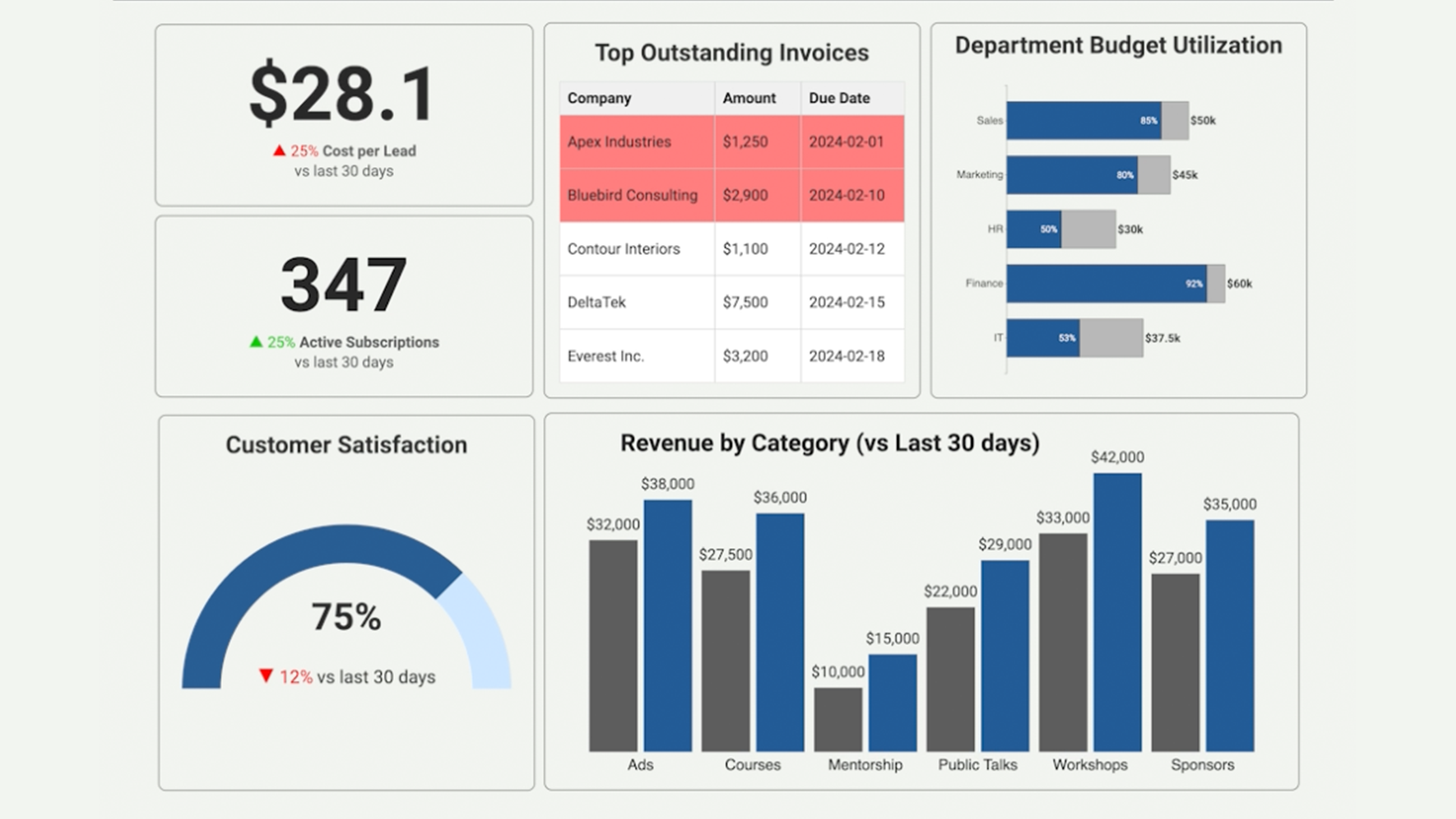Dashboards That Actually Get Used
Say Goodbye to Digital Collectors 👋
March 24, 2025 • 5 min read

Yep. Despite good intentions, dashboards often wind up ignored, silently gathering digital dust in a forgotten corner of your analytics platform.
So what's going wrong here?
The truth (and it's a little uncomfortable to admit) is that dashboards often fail not because of a lack of effort, but because they just aren't engaging, clear, or useful enough. They're simply not doing their job effectively: communicating information clearly and compellingly to help real people make better decisions.
But there's good news. You can turn these dashboards from abandoned museum pieces into essential daily tools. Here’s how.
Principle #1: Keep it Simple—Nobody Likes Dashboard Overload 🙅♀️
Think about dashboards you've personally stopped visiting. Most likely, they were cluttered and overwhelming—too many visuals, noisy colors, and redundant information. You'd open them once, feel instant anxiety, and then leave forever.
Your users feel the same way.
Here's the remedy to dashboard overwhelm:
- Remove ruthlessly. Strip out unnecessary borders, decorations, and excess labeling. Every pixel should earn its place.
- Whitespace is your friend. Give visuals breathing room and guide your user’s eye effortlessly toward the most important insights.
- Easy on the colors. Use color sparingly and intentionally—highlighting only critical information or alerts.
Bottom line? Calm, clean dashboards keep users coming back.
Principle #2: Provide Meaningful Context—Numbers Alone Don’t Tell the Story 📚
Here's the hard truth: A dashboard with numbers but no context quickly becomes background noise. A number without context is meaningless and quickly forgotten.
To stop this from happening:
- Benchmark your data. Add comparisons to historical periods, industry averages, or peer performance.
- Clearly define goals and targets. Make it immediately obvious if metrics are on track, smashing expectations, or in the danger zone.
- Explain what's happening. Don't leave your user guessing. Provide helpful annotations or brief explanations of why something matters—not just what the number is.
When your dashboard puts numbers into clear perspective, users see it as indispensable—not disposable.
Principle #3: Align with Your Users’ Actual Workflow 📅
Here's a biggie: dashboards fail when they're built around what's convenient for data analysts rather than what's natural for users. If people can't quickly find the information they actually care about, they're gone in seconds.
Here’s how to fix that:
- Start high-level, then drill down. Put key insights and KPIs front-and-center, then gradually introduce details.
- Group information intuitively. Align your data with user tasks, not data sources. Think campaigns, product categories, regions—whatever makes sense for users' daily workflow.
- Stay consistent. Using a consistent visual style across your dashboards helps users grasp insights effortlessly, saving them precious brain power.
A thoughtfully structured dashboard quickly becomes the go-to tool users love and rely on daily.
Dashboard Sanity Check ✅: Before You Hit "Publish," Ask Yourself...
- Is it instantly clear what's most important? If a user opened this dashboard for just five seconds, would they understand what’s happening, what’s going well, and what’s concerning?
- Is everything actionable? Every number or visual on your dashboard should drive some form of action or decision.
- Did you include enough context? Have you provided benchmarks, historical comparisons, or explanations that help users instantly grasp why the numbers matter?
- Is the layout intuitive for your users (not just you)? Step back and view the dashboard from your users' perspective. Better yet—get their feedback. Does it align with how they naturally seek information?
- Is it visually calm and focused? Eliminate any unnecessary clutter. Remember, a cleaner dashboard isn't just prettier—it's easier and faster to use.
Dashboards that truly resonate with users don't just show data—they tell clear, actionable stories tailored to their audience. Follow these principles, and you'll transform forgotten dashboards into indispensable tools your team uses and loves every single day.